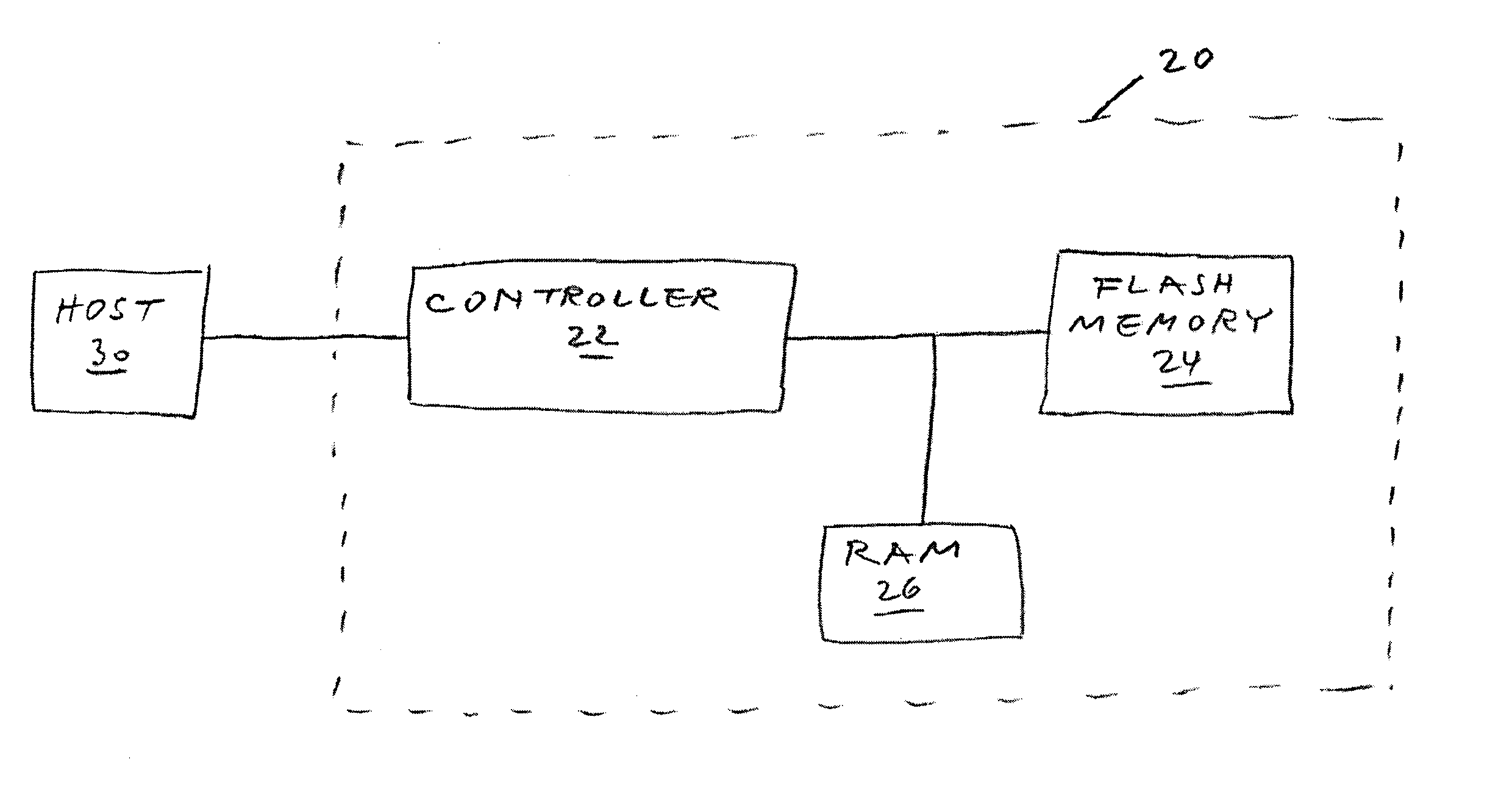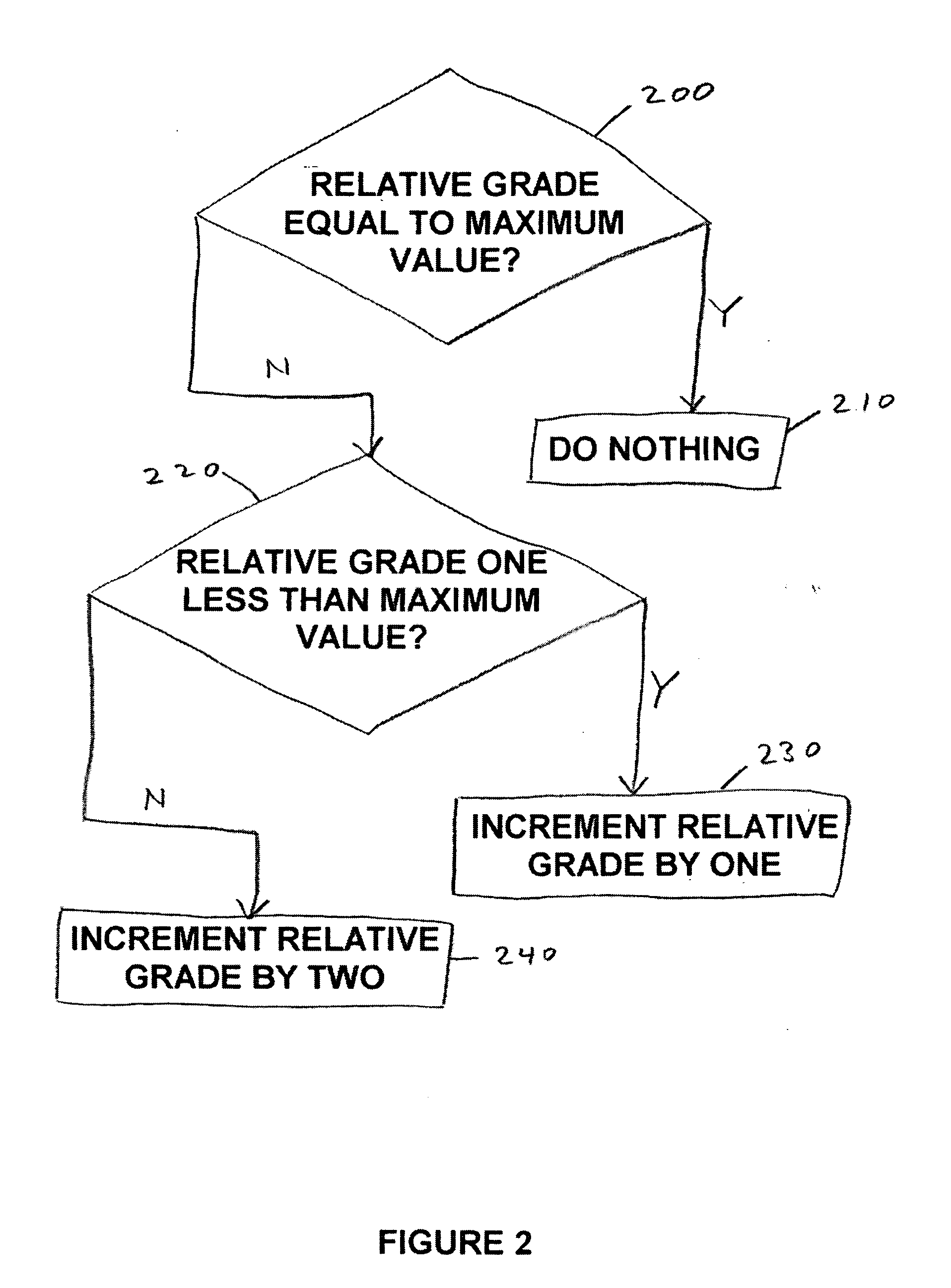Method of achieving wear leveling in flash memory using relative grades
a technology of relative grades and flash memory, applied in the field of flash memory, can solve the problems of limited number of times a flash block may be erased and re-written, no longer guaranteed by the device manufacturer to operate according to its specifications, and non-even wear across the population of blocks
- Summary
- Abstract
- Description
- Claims
- Application Information
AI Technical Summary
Benefits of technology
Problems solved by technology
Method used
Image
Examples
Embodiment Construction
[0040] The present invention is of a method of achieving wear leveling in a memory such as a flash memory without explicitly counting erase cycles.
[0041] The principles and operation of wear leveling according to the present invention may be better understood with reference to the drawings and the accompanying description.
[0042] The present invention is based on the observation that in order to equalize the erase cycles of the blocks it is not really necessary to know the exact number of erase cycles of each block. Because equality of erase cycles is really a matter of the relation between the number of cycles of different blocks, it is possible to achieve that goal by measures that rely on keeping only relations between numbers of cycles of different blocks, rather than on keeping the absolute values of numbers of cycles.
[0043] An example of such a method is, for each block keeping a value equal to the difference between the number of times the block has been erased and the aver...
PUM
 Login to View More
Login to View More Abstract
Description
Claims
Application Information
 Login to View More
Login to View More - R&D
- Intellectual Property
- Life Sciences
- Materials
- Tech Scout
- Unparalleled Data Quality
- Higher Quality Content
- 60% Fewer Hallucinations
Browse by: Latest US Patents, China's latest patents, Technical Efficacy Thesaurus, Application Domain, Technology Topic, Popular Technical Reports.
© 2025 PatSnap. All rights reserved.Legal|Privacy policy|Modern Slavery Act Transparency Statement|Sitemap|About US| Contact US: help@patsnap.com



